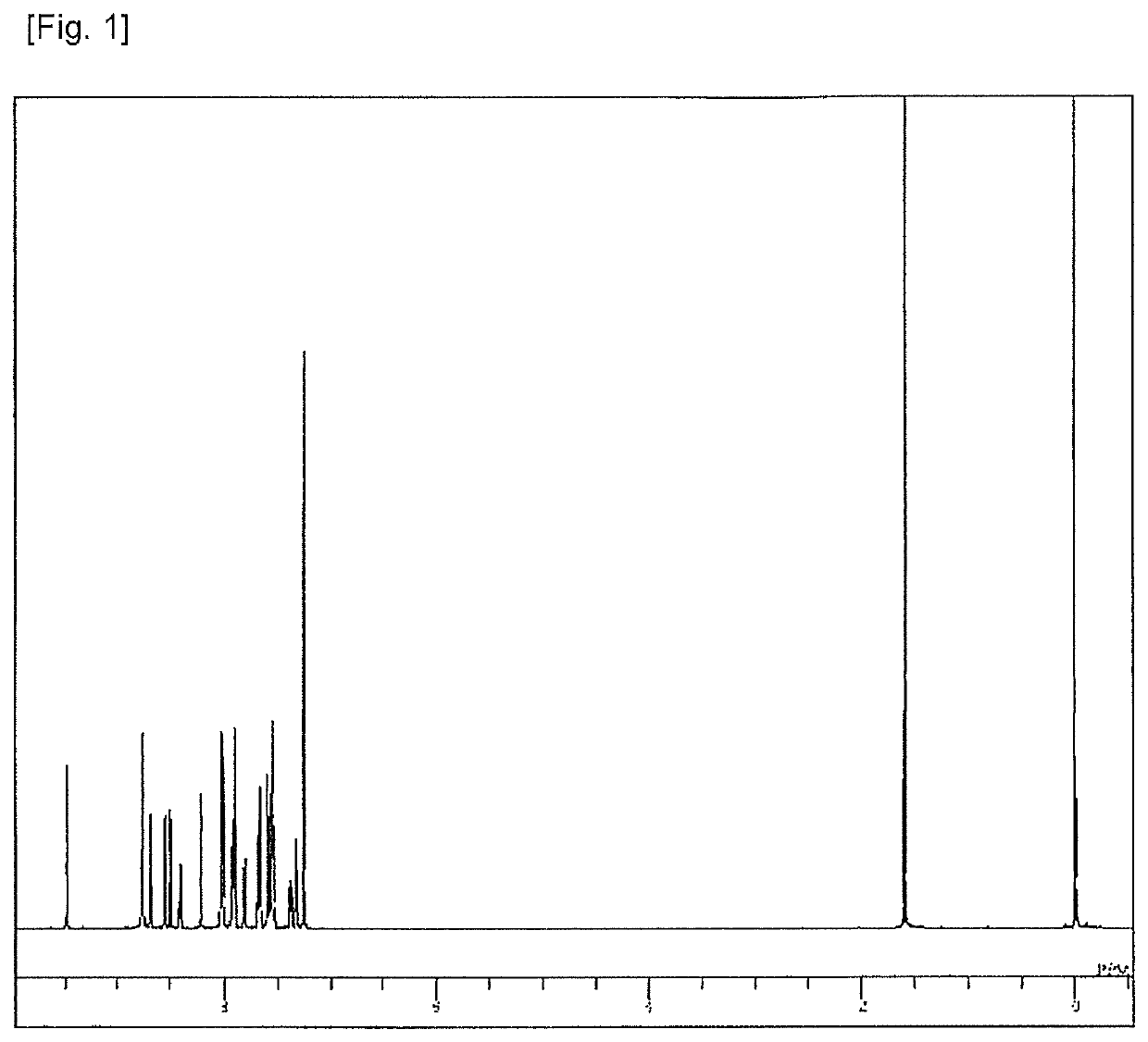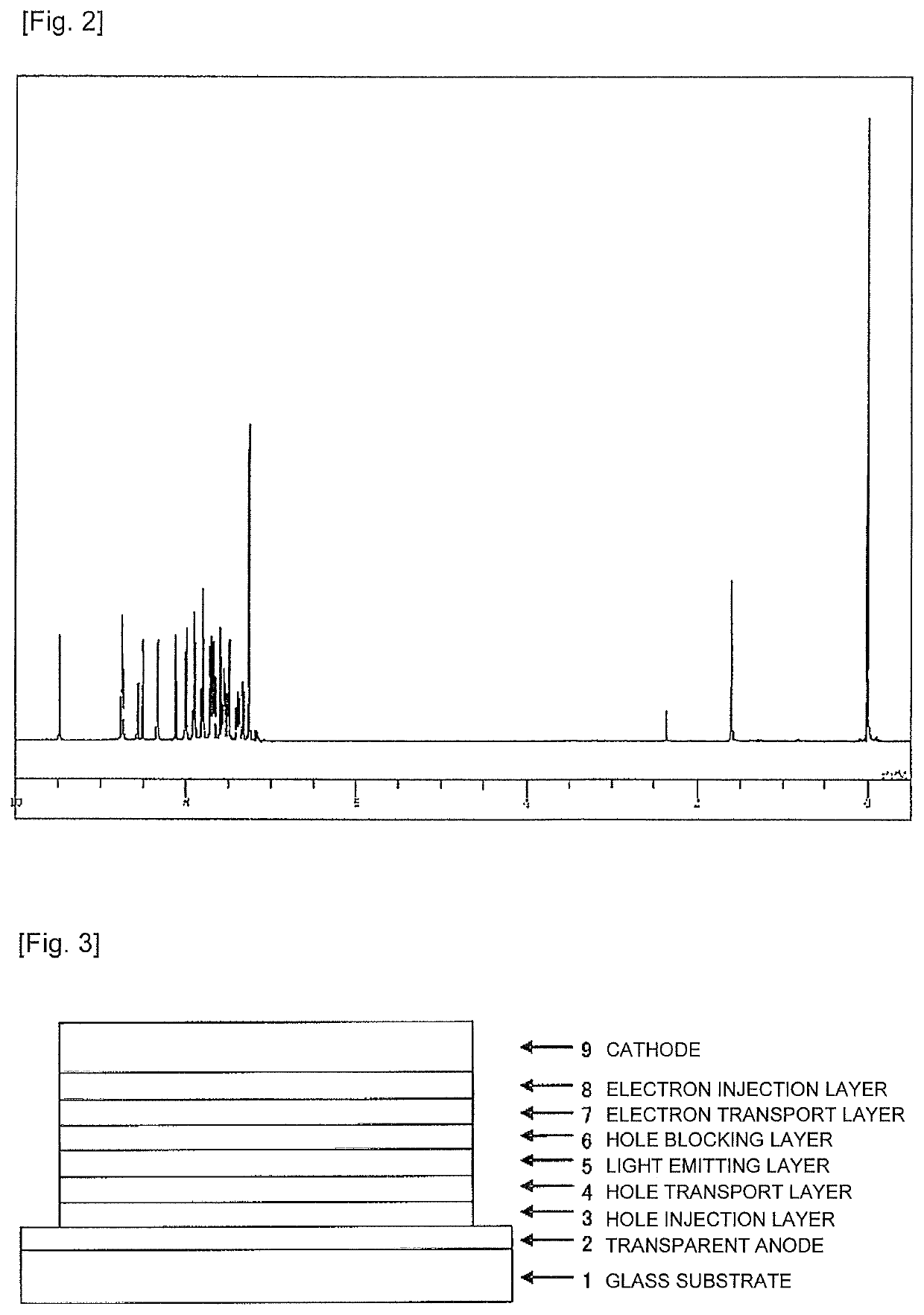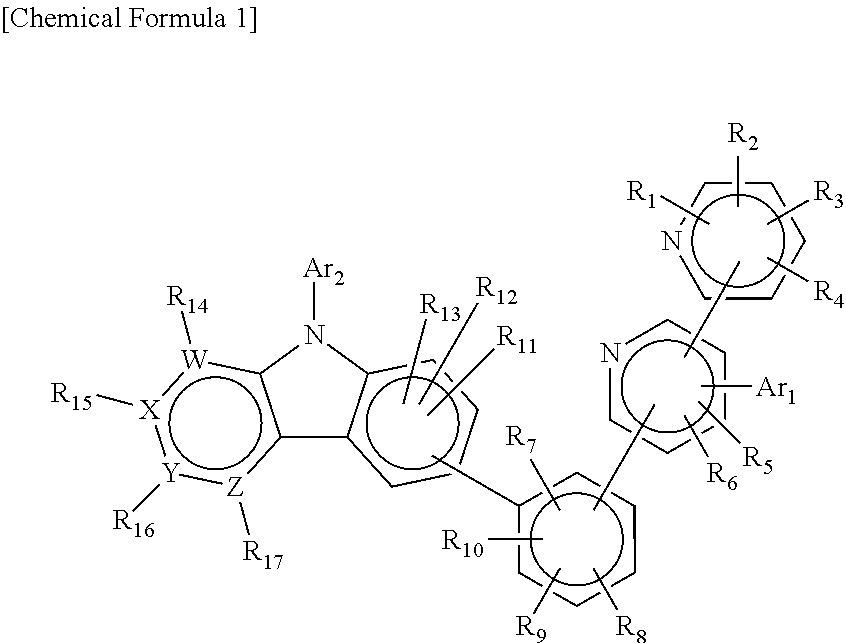Compound having substituted bipyridyl group and pyridoinodole ring structure, and organic electroluminescent device
a pyridoinodole ring and bipyridyl group technology, applied in the direction of solid-state devices, semiconductor devices, organic chemistry, etc., can solve the problems of poor electron transportability, material cannot be said to have sufficient hole blocking performance, and lowering efficiency, etc., to achieve excellent hole blocking ability, stable thin-film state, and high luminous efficiency
- Summary
- Abstract
- Description
- Claims
- Application Information
AI Technical Summary
Benefits of technology
Problems solved by technology
Method used
Image
Examples
example 1
Synthesis of 8-[4-{6-(naphthalen-2-yl)-[2,2′]bipyridine-4-yl}-phenyl]-5-phenyl-5H-pyrido[4,3-b]indole (Compound 2)
[0082]2′-Acetonaphthone (16.1 g), iodine (24.2 g), and pyridine (72 ml) were added into a reaction vessel, heated, and stirred at 100° C. for 3 hours. The mixture was cooled to a room temperature, and after water (170 ml) was added, purification by recrystallization was performed. The product was dried under reduced pressure at 70° C. for 12 hours to obtain a brown powder of 1-{2-(naphthalen-2-yl)-2-oxoethyl}pyridinium iodide (31.3 g; yield 88%).
[0083]4-Bromobenzaldehyde (15.4 g), 2-acetylpyridine (10.1 g) and methanol (140 ml) were added beforehand into a reaction vessel and cooled to −5° C. while being stirred, and then a 3% (wt / wt) NaOH methanol solution (140 ml) was dropped and further stirred for 2 days to prepare a solution. The obtained 1-{2-(naphthalen-2-yl)-2-oxoethyl}pyridinium iodide (31.3 g), ammonium acetate (80.3 g) and methanol (180 ml) were added to the p...
example 2
Synthesis of 8-[4-{6-(biphenyl-4-yl)-[2,2′]bipyridinyl-4-yl}-phenyl]-5-phenyl-5H-pyrido[4,3-b]indole (Compound 8)
[0087]The same process as Example 1 was applied to synthesize 6-(biphenyl-4-yl)-4-(4-bromophenyl)-[2,2′]bipyridine from 4-acetylbiphenyl. The obtained 6-(biphenyl-4-yl)-4-(4-bromophenyl)-[2,2′]bipyridine (3.7 g), 8-bromo-5-phenyl-5H-pyrido[4,3-b]indole (3.3 g), tetrakis(triphenylphosphine)palladium (0) (0.3 g), a 2M potassium carbonate solution (12 ml), toluene (30 ml), and ethanol (7 ml) were added into a reaction vessel substituted with nitrogen, and heated under reflux for 3 hours while being stirred. The mixture was cooled to a room temperature, and a deposited crude product was collected by filtration. The crude product was purified by column chromatography (carrier: NH silica gel, and eluent: toluene) to obtain a white powder of 8-[4-{6-(biphenyl-4-yl)-[2,2′]bipyridinyl-4-yl}-phenyl]-5-phenyl-5H-pyrido[4,3-b]indole (Compound 8) (1.7 g; yield 34%).
[0088]The structure...
example 3
[0090]The melting point and glass transition point of the compounds of the present invention were determined using a high-sensitive differential scanning calorimeter (DSC 3100S produced by Bruker AXS).
[0091]
GlassMeltingtransitionpointpointCompound of Example 1 of the255° C.122° C.present inventionCompound of Example 2 of the246° C.128° C.present invention
[0092]The compounds of the present invention have glass transition points of 100° C. or higher. This demonstrates that the compounds of the present invention have a stable thin-film state.
PUM
| Property | Measurement | Unit |
|---|---|---|
| voltage | aaaaa | aaaaa |
| luminance | aaaaa | aaaaa |
| work function | aaaaa | aaaaa |
Abstract
Description
Claims
Application Information
 Login to View More
Login to View More - R&D
- Intellectual Property
- Life Sciences
- Materials
- Tech Scout
- Unparalleled Data Quality
- Higher Quality Content
- 60% Fewer Hallucinations
Browse by: Latest US Patents, China's latest patents, Technical Efficacy Thesaurus, Application Domain, Technology Topic, Popular Technical Reports.
© 2025 PatSnap. All rights reserved.Legal|Privacy policy|Modern Slavery Act Transparency Statement|Sitemap|About US| Contact US: help@patsnap.com



